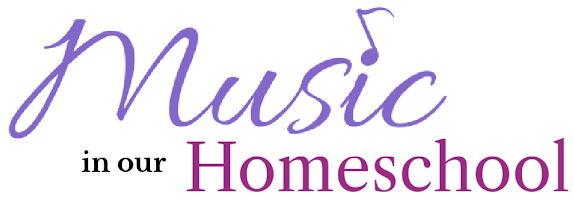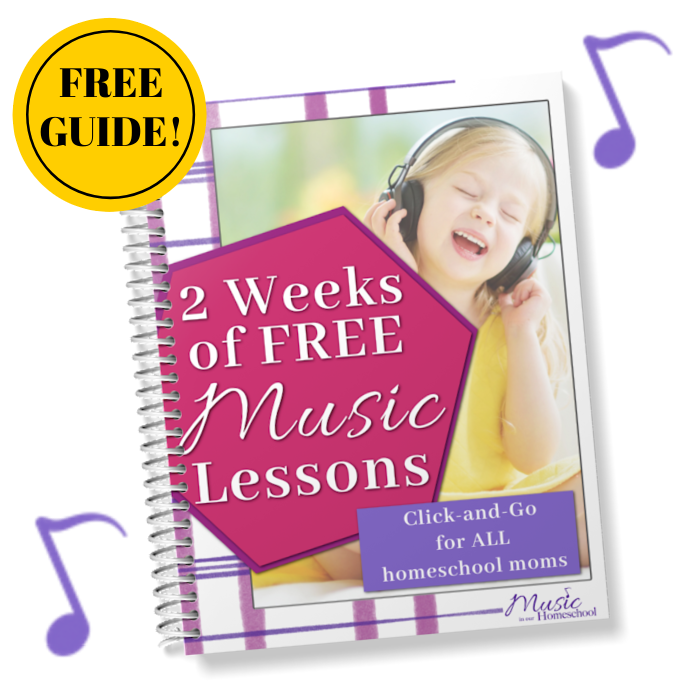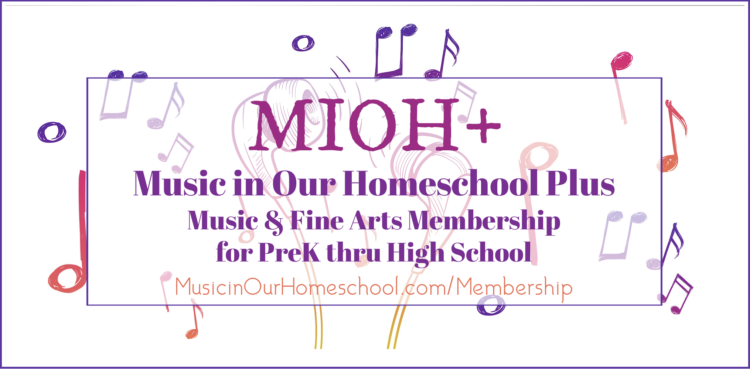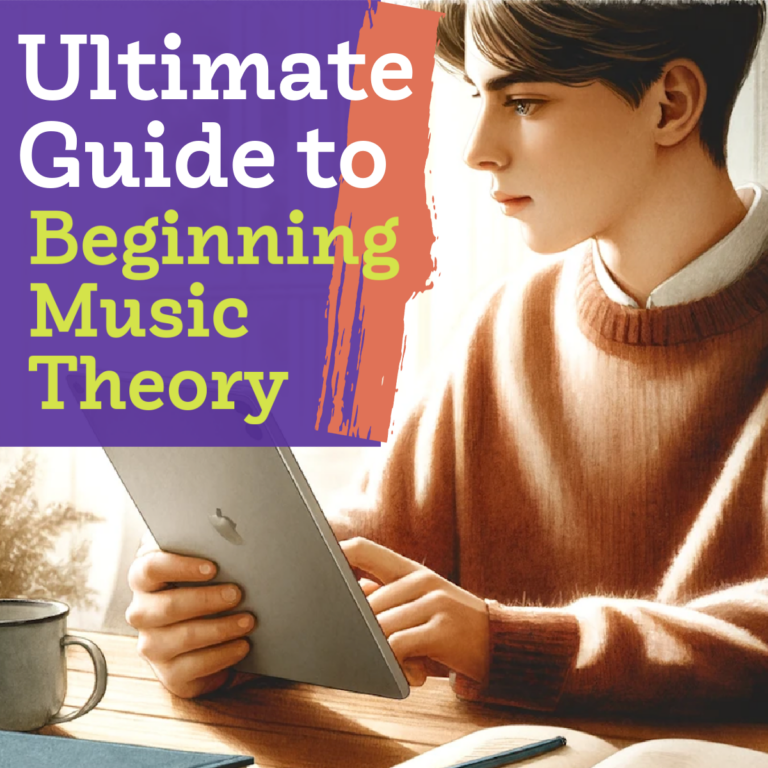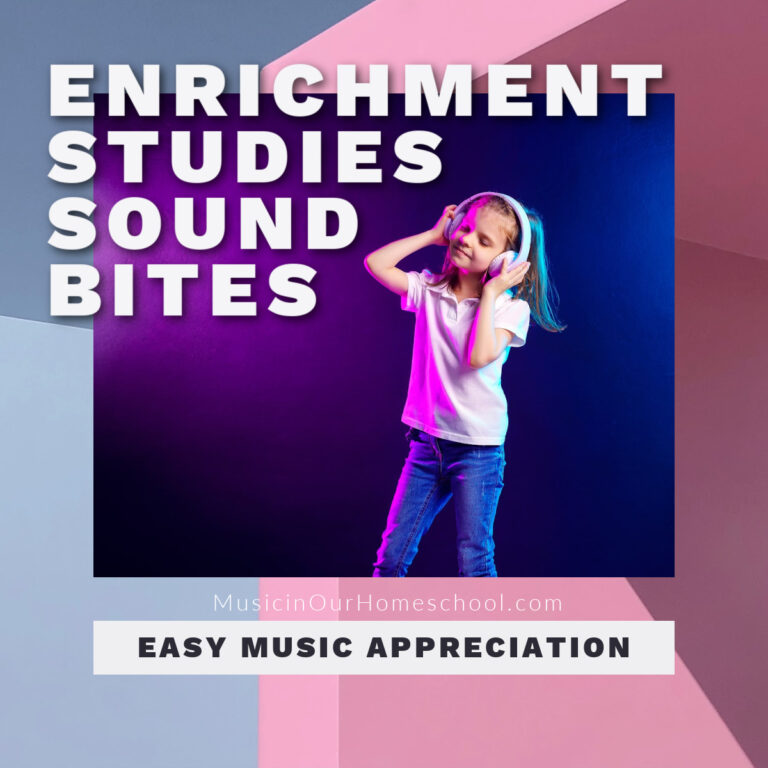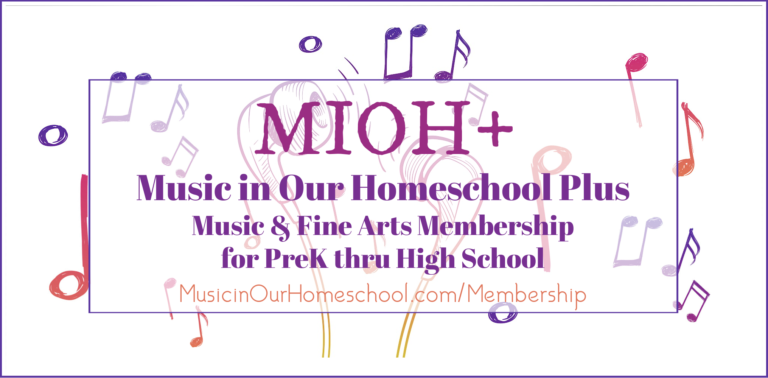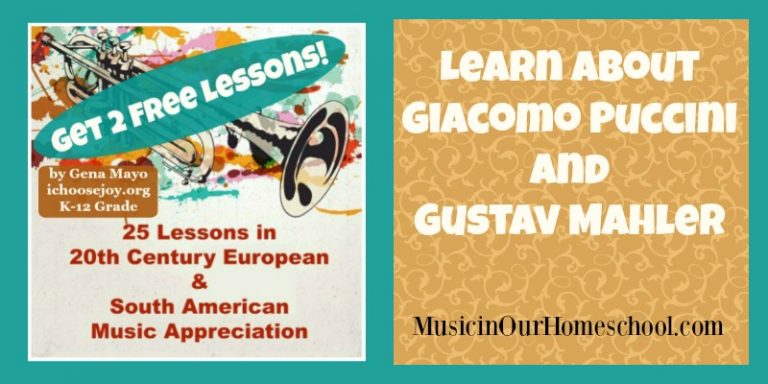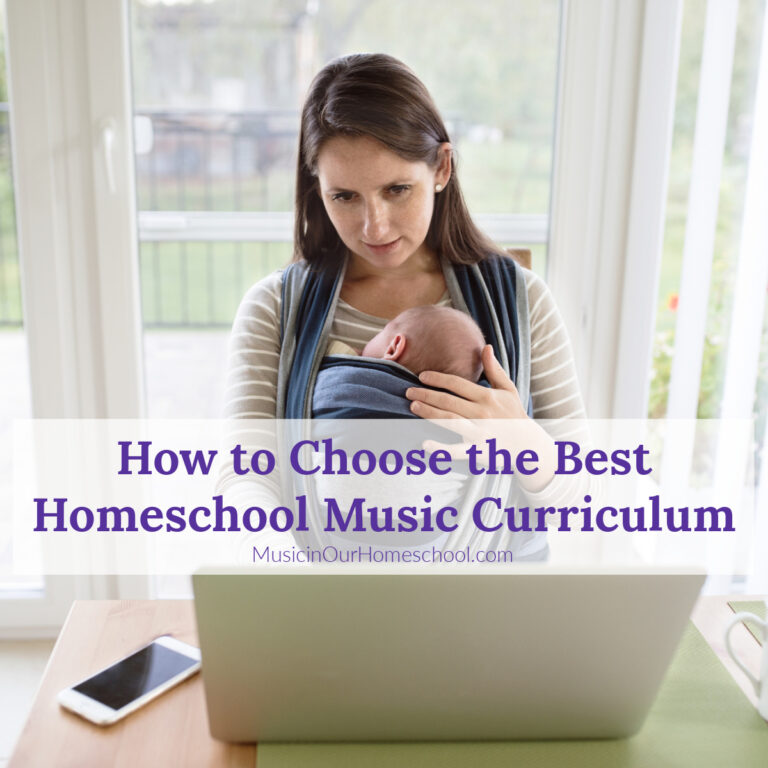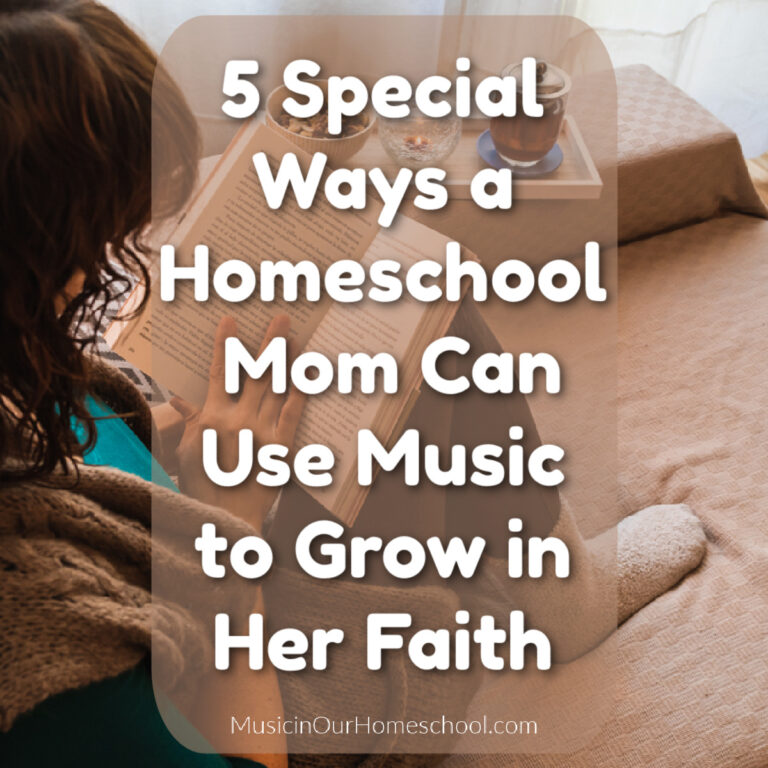16 Homeschooling Tips for Including Music Education in Your Homeschool (E12)
Today, I’d like to give you some of my top homeschooling tips for including a quality music education in your already jam-packed, busy homeschool. As many of you know, I’m a veteran homeschooler of almost 20 years, and have homeschooled all eight of my children. Four have graduated from high school (2 of those have graduated from college), and my last four are in middle and high school. I have six more years of homeschooling to go!
I’m also a music teacher and first taught in the public school system– junior high choir and elementary general music– before having children and deciding to stay home and homeschool them. Since I’m both a homeschool parent and a music teacher, I have discovered quite a few tips for including music education in your homeschool that I’d like to share with you today to encourage you in this worthy endeavor!
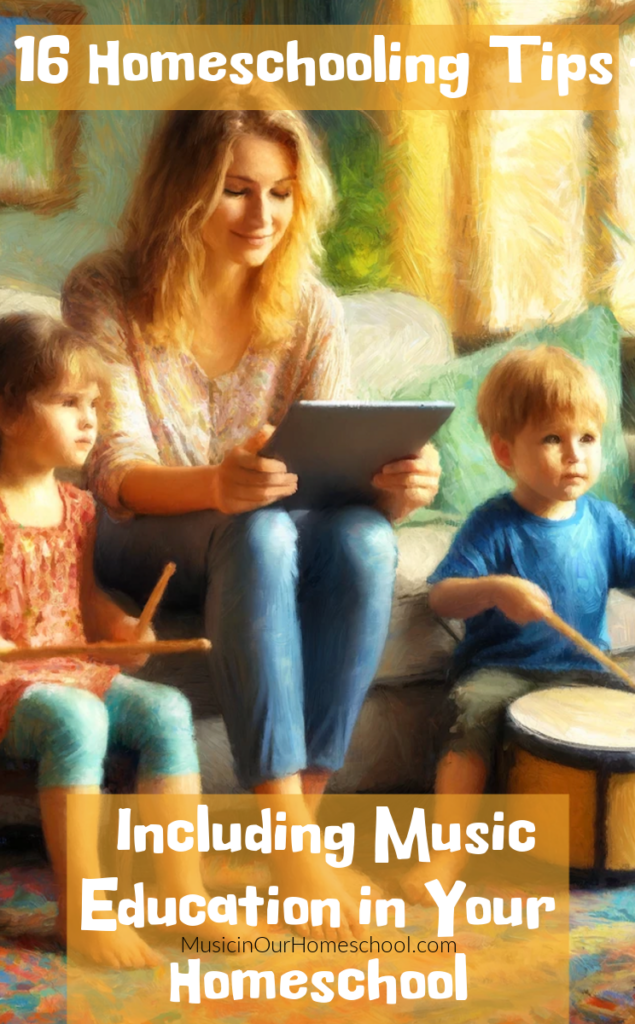
Disclosure: I get commissions for purchases made through affiliate links in this post.
1. Watch Videos to Learn
Many of the videos I include in the lessons are of actual music performances. I love to show the musicians playing their instruments, the singers singing on stage, and the dancers performing in a musical or ballet. I really think it gives the students a huge education in learning what the instruments look like up close and how they’re played. Seeing the performances are the next best thing to going to a live in-person concert, recital, performance, or show. And, sometimes it’s even better because they zoom in to see even closer than you would if you were in an audience.
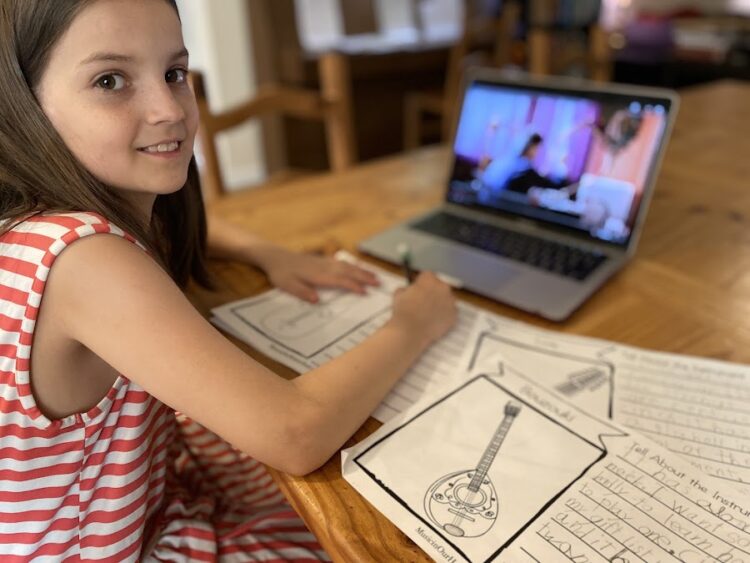
2. Just Listen Instead of Watching
If you are getting to the point where you feel there is way too much screen time going on in your home and homeschool (I get it!), then just listen to the music on the videos that are a part of Music in Our Homeschool lessons. It’s ok to hit play on the video but then cover up the screen. It’s actually a wonderful focused listening experience for students to learn how to focus their attention. We know that skill is lacking today and seems to be getting worse. So, use some music time to practice it! I’ve also encouraged my kids to draw or do something else with their hands while they listen to the music.
3. It’s Fine to Just Use Your Phone
Now, of course, the larger the group of kids you’re teaching, a bigger the screen would be more effective so they can see it better. However, I don’t want that to be something that keeps you from going ahead and getting started with including music education in your homeschool.
There were many times in the past, before I had a smart tv set up or an iPad or a laptop to use, that I just used my phone for the Music in Our Homeschool Plus music lesson of the day. I pulled up the lesson and played it for my kids directly with my phone. You can do that, too!
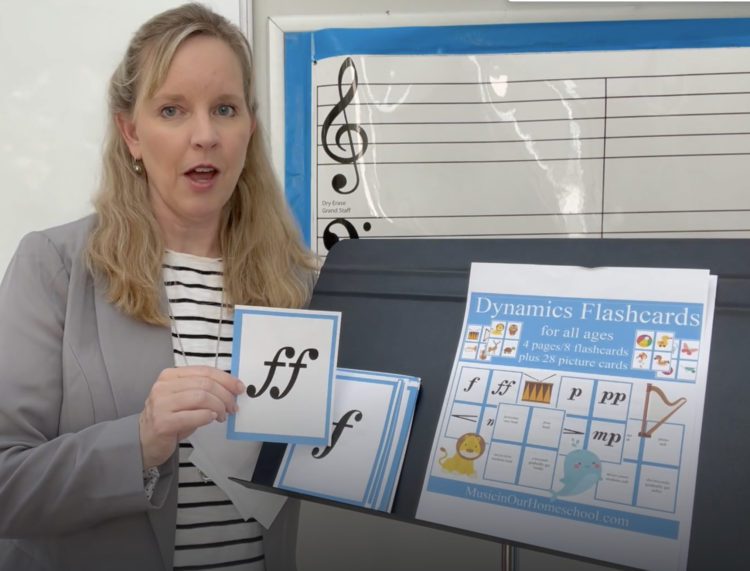
4. Fit in Music When You’re Doing Other Things
A great time-saving hack is to include music education when you’re doing other things that are going to be done anyway. For example, you can play the music lesson in the car. I include an audio version replay of the LIVE music lessons I teach each month. Play one of those next time you’re driving your kids someplace!
Or, listen to a particular composer’s music while you eat breakfast or dinner, do chores, during bathtime, during read-aloud or silent reading time, during afternoon quiet time, or during handicraft time!
5. Don’t Play the Entire Video Performance
If you’re watching a video that includes a performance of a symphony, for example, don’t feel like you have to watch the entire thing. I rarely play an entire performance video for my kids when we’re doing music appreciation lessons. Stop whenever you feel like they’ve gotten a good idea of what the lesson is about.
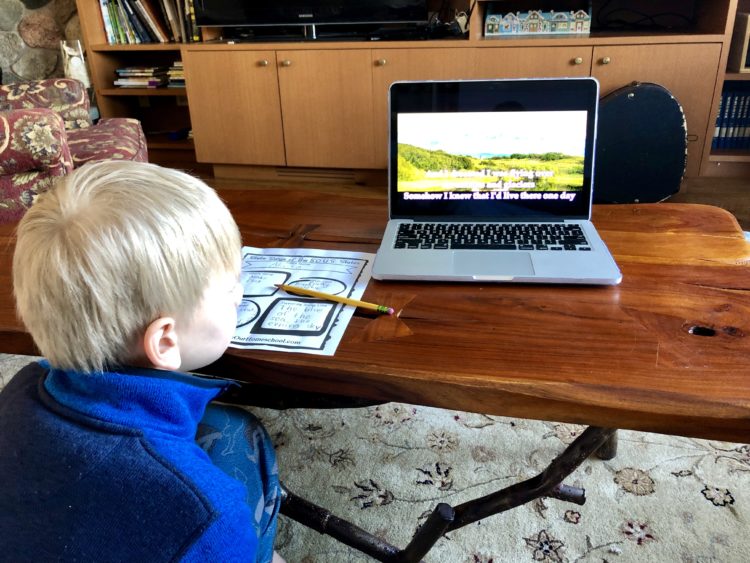
6. Feel Free to Go On Rabbit Trails, a fun tip for including music education!
Rabbit trails are the best! If you’re listening to a piece by Chopin or learning about the cello or studying about Big Band music and your kids get really excited about it, find a way to extend the learning! Search for more videos on YouTube, head to your library and check out some books on the subject, or email me to see if I have any more lessons to recommend for your rabbit trail!
7. Find a Way to Schedule Music Education In
Sometimes it’s just a simple logistical thing that needs to be fixed, such as adding something to a schedule, and then the music will happen in your homeschool!
Here are four of my favorite ideas for scheduling Music Time:
- Morning Time
- Loop Schedule
- Music Mondays
- Fine Arts Fridays
Morning basket time is something I implemented in my homeschool a few years ago that made all the difference! My kids knew that they needed to be in the living room ready to start school with me at 9am on the dot every school day. Before I instituted that, things had gotten very relaxed and it was hard to ever find a time when they were all ready to work with me. I’ll call them down and someone would be in the middle of math, someone else had just started cooking breakfast, and someone else said they were studying for a science test they needed to take that day.
So, I finally decided that our morning time together needed to be the priority, and it worked! Then, all I had to do was make sure that music appreciation lessons were part of the morning time.
A Loop Schedule works in conjunction with morning time for those subjects you don’t want to or don’t need to do every day. Make a list of them and simply do the next on the list when you meet together next.
Music Mondays or Fine Arts Fridays simply means that you’ll do your music lessons on those days.
And, remember what I always say: “Once a week is all you need!” If that’s all you can do, it’s a start–they’ll get 36 Music in Our Homeschool lessons each school year!
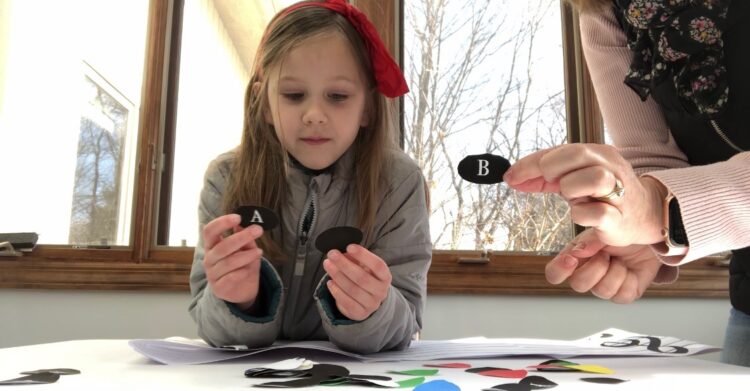
8. Print Out the Music Calendar of the Month
Don’t your kids love games and incentives? I provide several versions of the Music Calendar of the Month in both the Basic and Premium Tiers of the Music in Our Homeschool Plus membership. There is a color version, a black-and-white version, and a blank version if you want to put different lessons on the days. Print out your favorite and let your child color in the circle, add a checkmark, or add a sticker to the lessons you do! And, then you’re ready for the next tip.
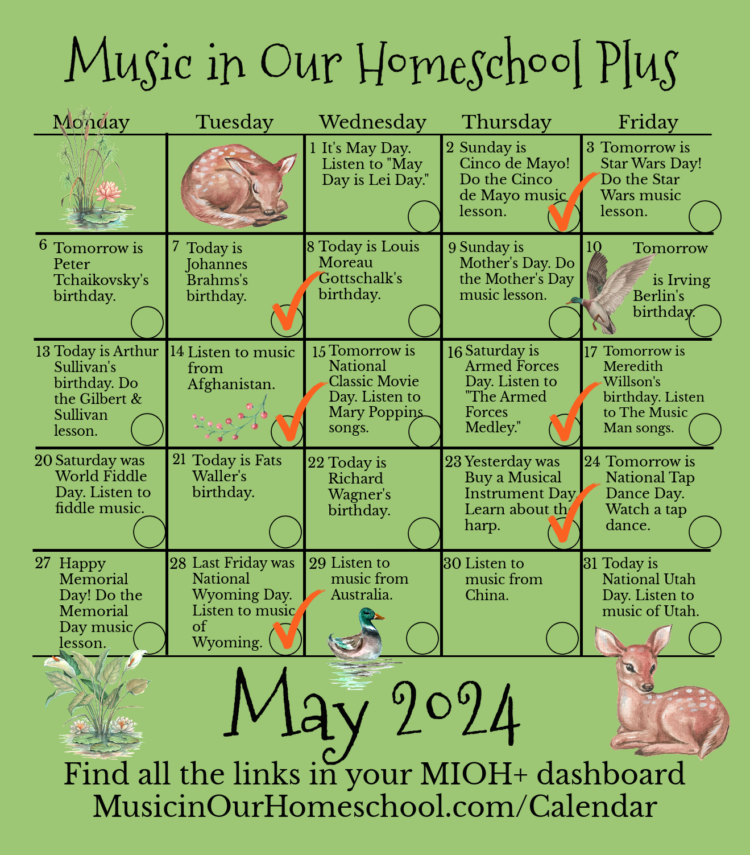
9. Enter the Monthly Amazon Gift Card Contest
After your Music Calendar of the Month is marked with the lessons you did that month (remember, you only need to average one per week!), you can enter the Amazon Gift Card Contest that is a part of the Premium Music in Our Homeschool Plus membership. Each month, a blessed member wins a gift card. Even high schoolers can enter if they’re working on lessons independently!
10. Set Up a Music Center So Kids Can Do Music Education Independently
Find a corner or spot and make it cozy and inviting for your child. Here are some things you could include in your music center, depending on your goals and the ages of your children:
- Headphones, so the student can be in the same area with others without being distracted or distracting.
- Instruments such as simple rhythm instruments (rhythm sticks, hand drums, shakers), a recorder, or a ukulele. Include the music and a music stand to practice with and a course or videos so they can learn to play.
- Flashcards to practice learning music symbols, note names, key signatures, or instrument names.
- Laptop or Tablet for Music in Our Homeschool lessons.
- Books about music to learn about composers, styles, or specific pieces of music. Check these out from the library and get new ones periodically!
- Scarves to encourage movement while listening to music.
- Fun music worksheets with colored pencils, crayons, or markers
And, of course, there are other things you could add as well.
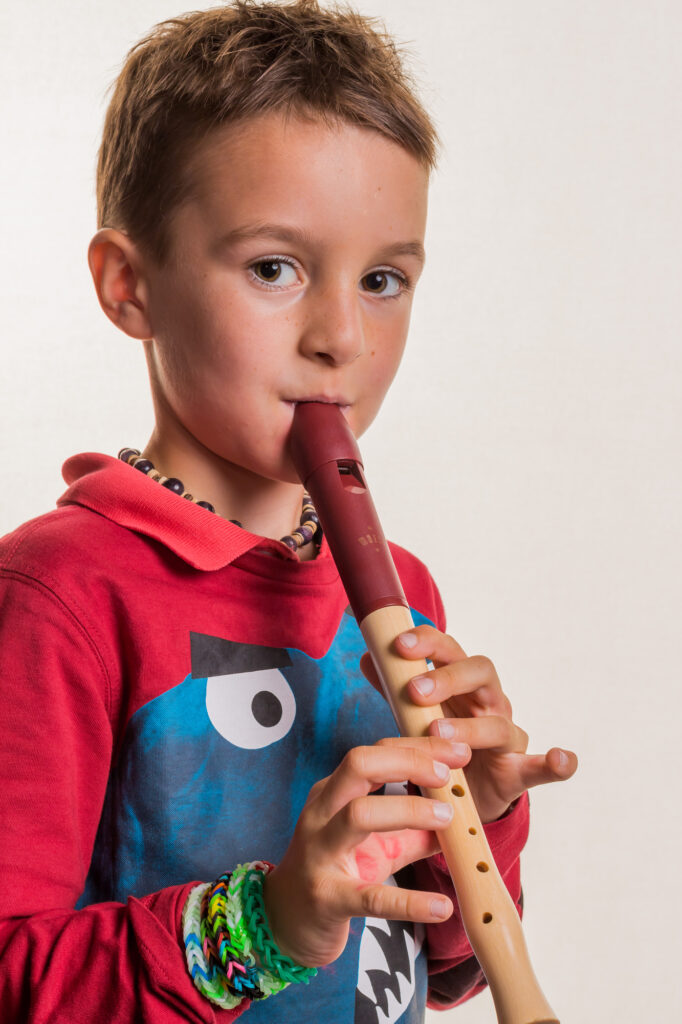
11. Adjust the Music Lessons for Preschoolers
I had eight kids in eleven years, so I did as much homeschooling together as a group as I could. If you’re doing some Music in Our Homeschool lessons that say they are for elementary students, feel free to adjust them for your preschoolers.
How? Here are a couple of ideas to adjust an elementary lesson for preschool:
- Simplify what you read to them (the lesson that’s on the screen).
- Spread out a lesson over a few days instead of finishing it in one day.
- Play less of a video.
- Let the kids dance around with scarves and/or play simple rhythm instruments while listening.
- Do the same lesson every day for a week (or even longer) because preschoolers love repetition.
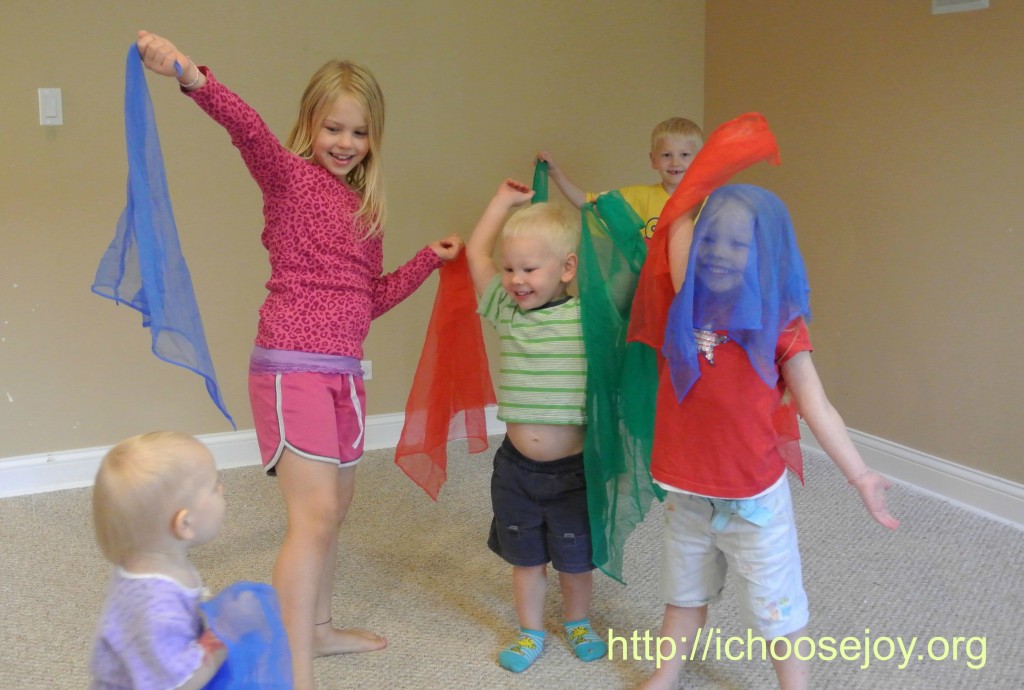
12. Adjust the Music Lessons for High Schoolers
One of the best things about learning from music appreciation and music history is that it helps students make connections to other subjects such as history, geography, science, art, and literature.
One of my long-time members used the Music in Our Homeschool elementary courses to help her high school students to make these connections!
See her testimonial here:
“And you know what? As I was working on high school transcript/course descriptions for my youngest, I was pretty blown away by how amazing her elective section looks, with a lot of credit going to MIOH. And course descriptions for geography, world history, US history are fun and unique because of MIOH also. Thank you so much for that, Gena Mayo.”
D., homeschool mom
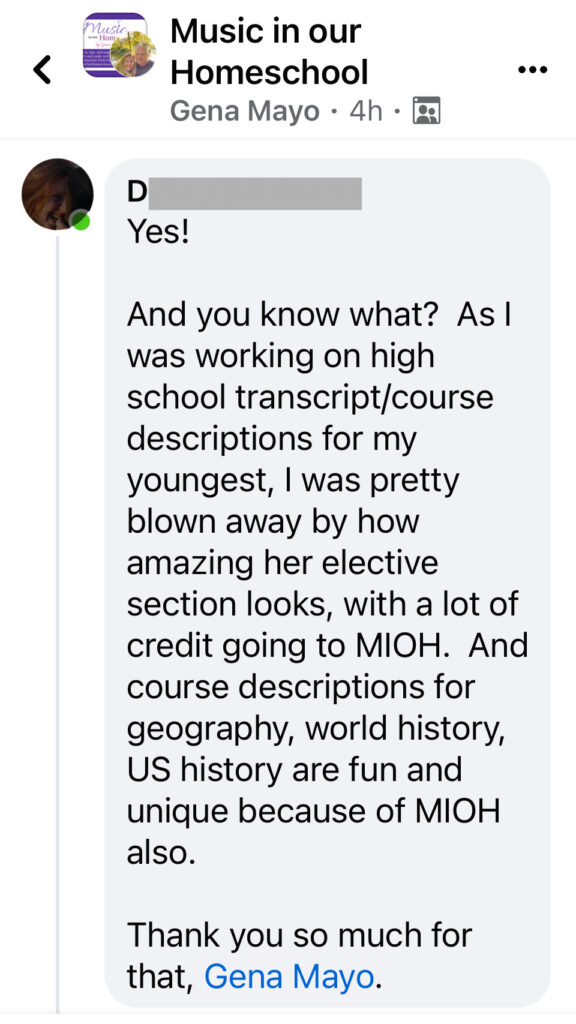
Also, set older kids up to do the lessons independently. There are music history, music theory, and applied music (such as beginning singing and beginning guitar) courses that were created especially for independent learning.
13. Repetition is Good!
I remember when I first started teaching Musikgarten classes (which are early childhood music and movement classes for babies through age 7–think Mommy and Me classes) way back over 30 years ago! The lesson plans from week to week hardly changed. We would maybe add one or two new songs or activities, but for the most part they would be repeating them from week to week. At first I balked at this, but as I became an experienced teacher, I realized that those lesson plan writers knew what they were doing!
It was only after multiple exposures to a particular song to sing, or classical piece to dance to, or steady beat activity, or imagination game that the kids started to loosen up and fully embrace it. So, now, I never have a problem with repetition of music lessons. You did the same May the Fourth Star Wars lesson last year? It’s ok, do it again this year!
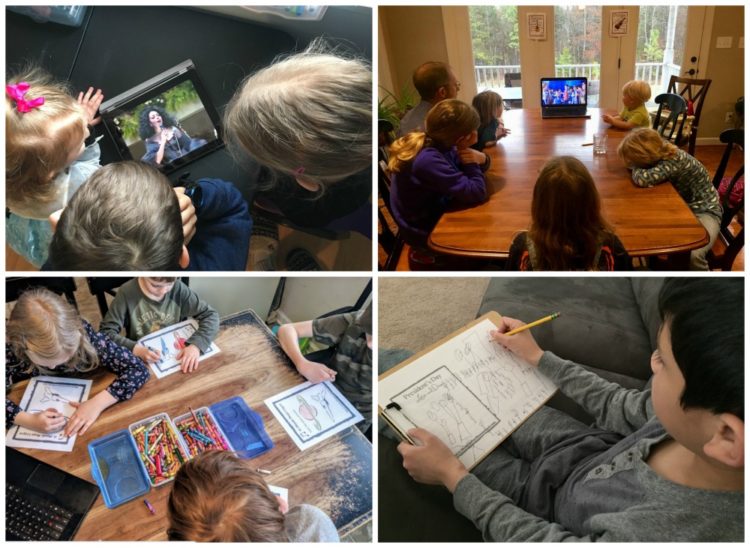
14. Break Up Longer Music Lessons into Shorter Ones
I’ve alluded to this a few times already, but I want to give it its own space to make sure you understand that this is ok. Please, whatever you do as a homeschool parent, adjust the curriculum (whether it’s science, literature, math, history, or even music) to fit your need as a teacher and a family. Watch your kids. Do they need a break? Do they need to go outside for a while? Are there some stressful things going on, like a family member who is sick or you’re moving?
You can break up longer lessons into shorter ones, or spread a single lesson out over a whole week. You can skip a lesson or a read-aloud book or a project or an experiment! This is your homeschool. Make it work for you!
15. Get Prepared Ahead of Time–an awesome tip for including music education
I always say that my music lessons are easy-to-use and click-and-go, no prep needed. And, they are!
But, if you know that you’ll want to include some printables or notebooking pages as part of your music time throughout the year, I encourage you to get them all printed and bound (or put into a 3-ring binder) in the summer before school starts in the fall. Then, you’re all set and nothing will hold you back from doing the lessons each week!
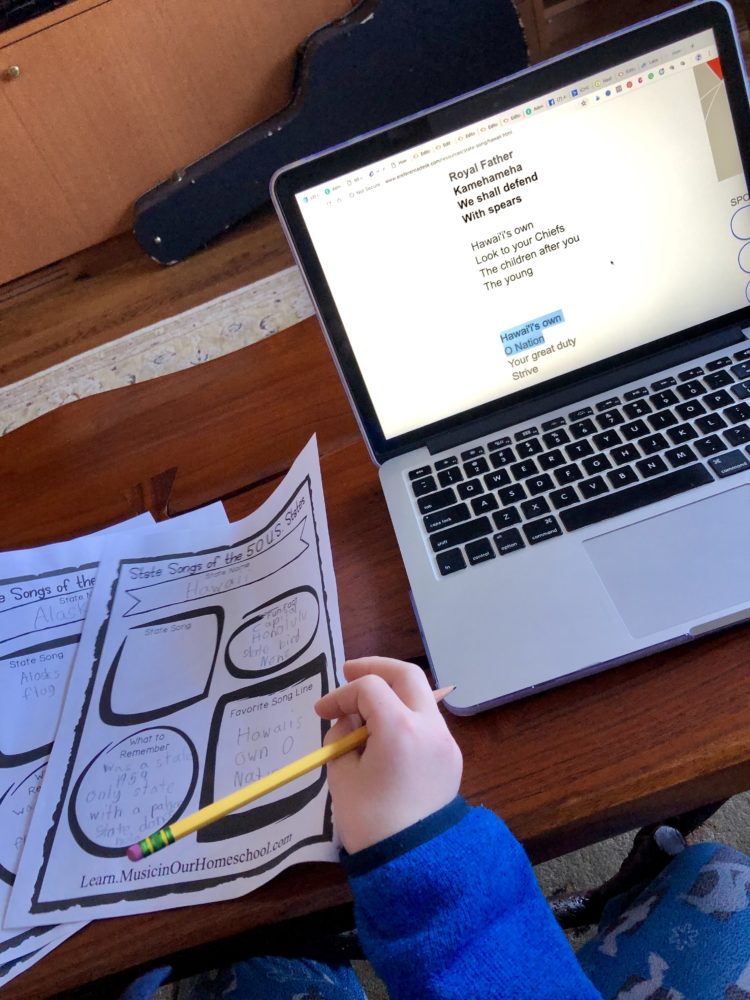
16. Get Homeschool Music Education Help in the Community
Our final tip today is to get help in the Community. We have an incredible new MIOH+ Community forum for Premium members where you can get all your questions related to music education in your homeschool answered. Head over to join today if you’re not already a member. And, if you are a member, go post in the Community or see if you can help a fellow homeschooler with her question!
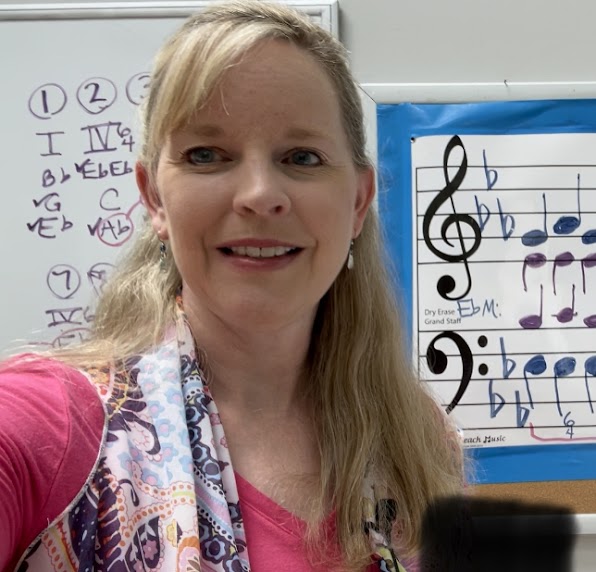
**Do you have any other homeschooling tips for including music that you’d like to share? Please post in a comment below!
See the YouTube Video “16 Homeschooling Tips for Including Music Education in Your Homeschool” here:
Listen to the Podcast Episode about Homeschooling Tips for Including Music Education here:
Listen here or subscribe and follow The Music in Our Homeschool Podcast through your favorite podcast app!
